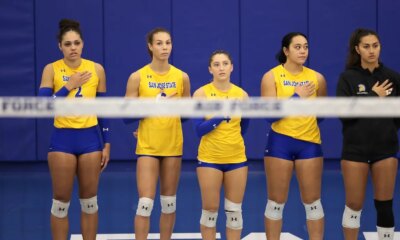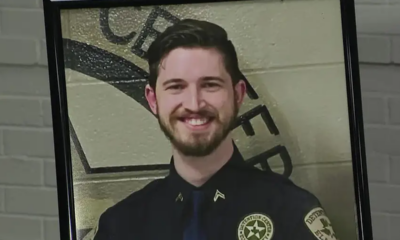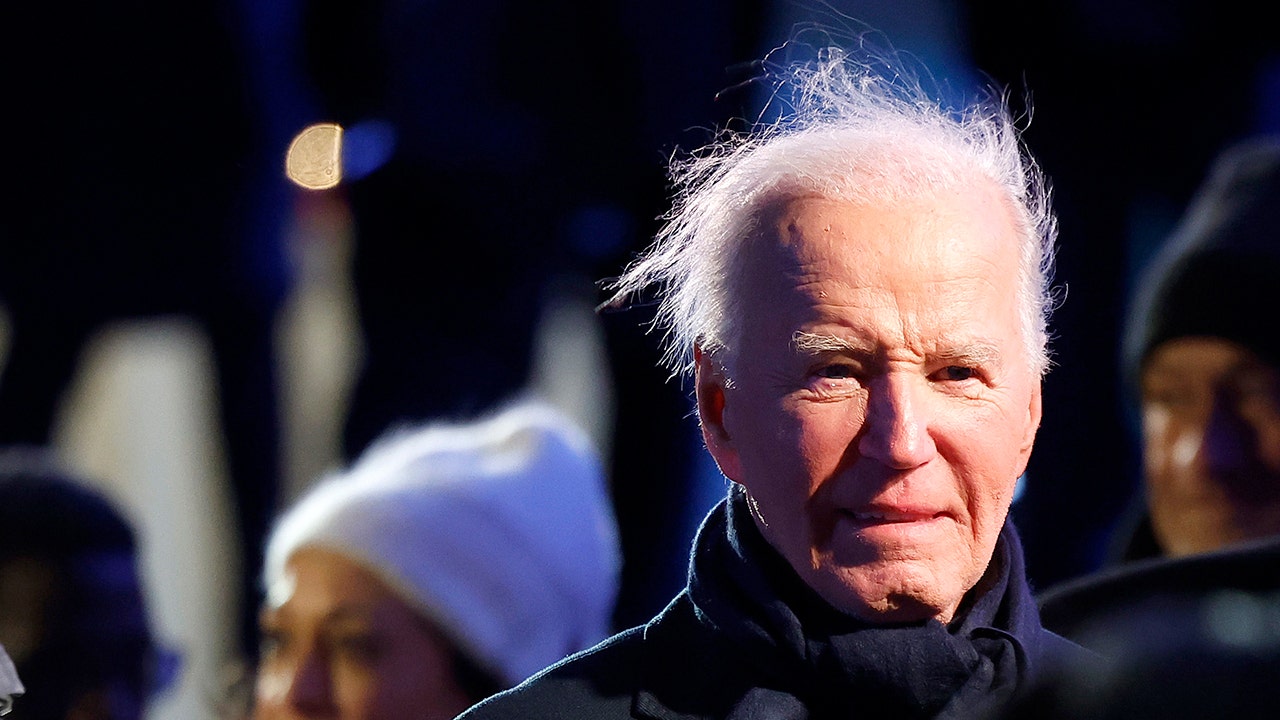Lifestyle
Powerhouse classical music producer Adam Abeshouse dies at 63

Classical music producer Adam Abeshouse was diagnosed with bile duct cancer last spring. His clients — including Simone Dinnerstein, Jeremy Denk, Joshua Bell and Lara Downes — organized a concert at his home studio to bid farewell.
Rick Marino/Abeshouse Productions
hide caption
toggle caption
Rick Marino/Abeshouse Productions
Renowned classical music producer Adam Abeshouse has died.
Over a career that lasted more than 30 years, Abeshouse made hundreds of records with some of classical music’s biggest stars. He won two Grammy awards, including Classical Producer of the Year in 1999.
Abeshouse died Thursday at his home in Westchester, N.Y. He was 63. His death was confirmed to NPR by his studio engineer.

Early in 2024, he had been diagnosed with bile duct cancer, and the disease swiftly metastasized. He was a producer who inspired great love and loyalty with the artists he worked with. Shortly before the end of his life, a dozen of his celebrity clients came together to perform for Abeshouse one last time, in a private concert at his home studio.
Adam Abeshouse understood musicians because he was a musician himself.
Born on Long Island in 1961, he began playing violin in the third grade. He studied at New York University and the Manhattan School of Music, and performed for years before and after he began producing other musicians, including such groups as the Orchestra of St. Luke’s and the Metropolitan String Quartet.
His career as a producer started with making audition tapes for friends in a small basement studio Abeshouse built himself.
“I found that I was really good coaching people through the process,” he told NPR. “This rhythm isn’t right; this line would speak much better if you aimed for this note. You try to find the essence of the music that you’re playing.”
Abeshouse said he wanted his clients to feel safe and loved during the pressure of recording sessions.
“I didn’t care about mistakes because we could always edit that out,” he said. “And to see people come in at the beginning — they were kind of nervous at the beginning. And there was always a point where you could see a change, where people would relax. You could see it and you could hear it.”
“We’ve made many many recordings together,” violinist Joshua Bell told NPR. “I’ve spent many hours with him in the studios, doing a process which is usually excruciating for me. But with him it always became a fun time together. Those moments have been so precious to me.”
Bell spoke to NPR during the farewell concert organized by another of Abeshouse’s celebrity clients, pianist Lara Downes. Musicians flew in from all over the world to be there, including Jeremy Denk, the MacArthur “genius grant” winning pianist.
“Adam has a combination of exactitude and patience,” Denk said. “That’s extremely essential for this kind of work. He’s also pretty interested in the individual character of each musician — what they’re trying to say, and what they’re after, what their dreams and goals in life are in a certain way.”
Denk performed an Ives sonata. The string trio Time for Three played an original composition entitled “Joy.” Abeshouse produced a record with the group performing with the Philadelphia Orchestra. The recording won two Grammys and Abeshouse said the project was one of the highlights of his career.
Time for Three’s violinist and vocalist Nick Kendall said Adam Abeshouse was the most selfless and talented producer the group had ever worked with.
“What he said to us before we saw him last is a reflection of how he is selfless,” said Kendall. “Before we left, he said, ‘Boys, just continue listening to each other.’ That hit us huge, and will always live with us.”
In 2002, Adam Abeshouse founded the Classical Recording Foundation to help artists record music they were passionate about but might not have economic appeal. Because he said, “Recordings are just as important an art form as live performance.”

Lifestyle
Is “The Godfather: Part II,” the perfect sequel? : Consider This from NPR

The “Kiss of Death” in “The Godfather: Part II”, directed by Francis Ford Coppola, based on the novel ‘The Godfather’ by Mario Puzo. Seen here from left, John Cazale (back to camera) as Fredo Corleone and Al Pacino as Don Michael Corleone.
Photo by CBS via Getty Images
hide caption
toggle caption
Photo by CBS via Getty Images

The “Kiss of Death” in “The Godfather: Part II”, directed by Francis Ford Coppola, based on the novel ‘The Godfather’ by Mario Puzo. Seen here from left, John Cazale (back to camera) as Fredo Corleone and Al Pacino as Don Michael Corleone.
Photo by CBS via Getty Images
Given the fact that it seems like Hollywood churns out nothing but sequels, you would think the industry would have perfected the genre by now.
Some sequels are pretty darn good, but many believe the perfect movie sequel came out 50 years ago this month.
Of course, we’re talking about Francis Ford Coppola’s The Godfather: Part II. It’s not only considered the greatest sequel of all time, it’s also considered one of the greatest movies of all time.
So why does Godfather II work, and where so many other sequels fall short?
NPR producer Marc Rivers weighs in.
For sponsor-free episodes of Consider This, sign up for Consider This+ via Apple Podcasts or at plus.npr.org.
Email us at considerthis@npr.org.
This episode was produced by Brianna Scott and Marc Rivers. It was edited by Courtney Dorning. Our executive producer is Sami Yenigun.
Lifestyle
JoJo Siwa Selling Tarzana Mansion For $4 Million
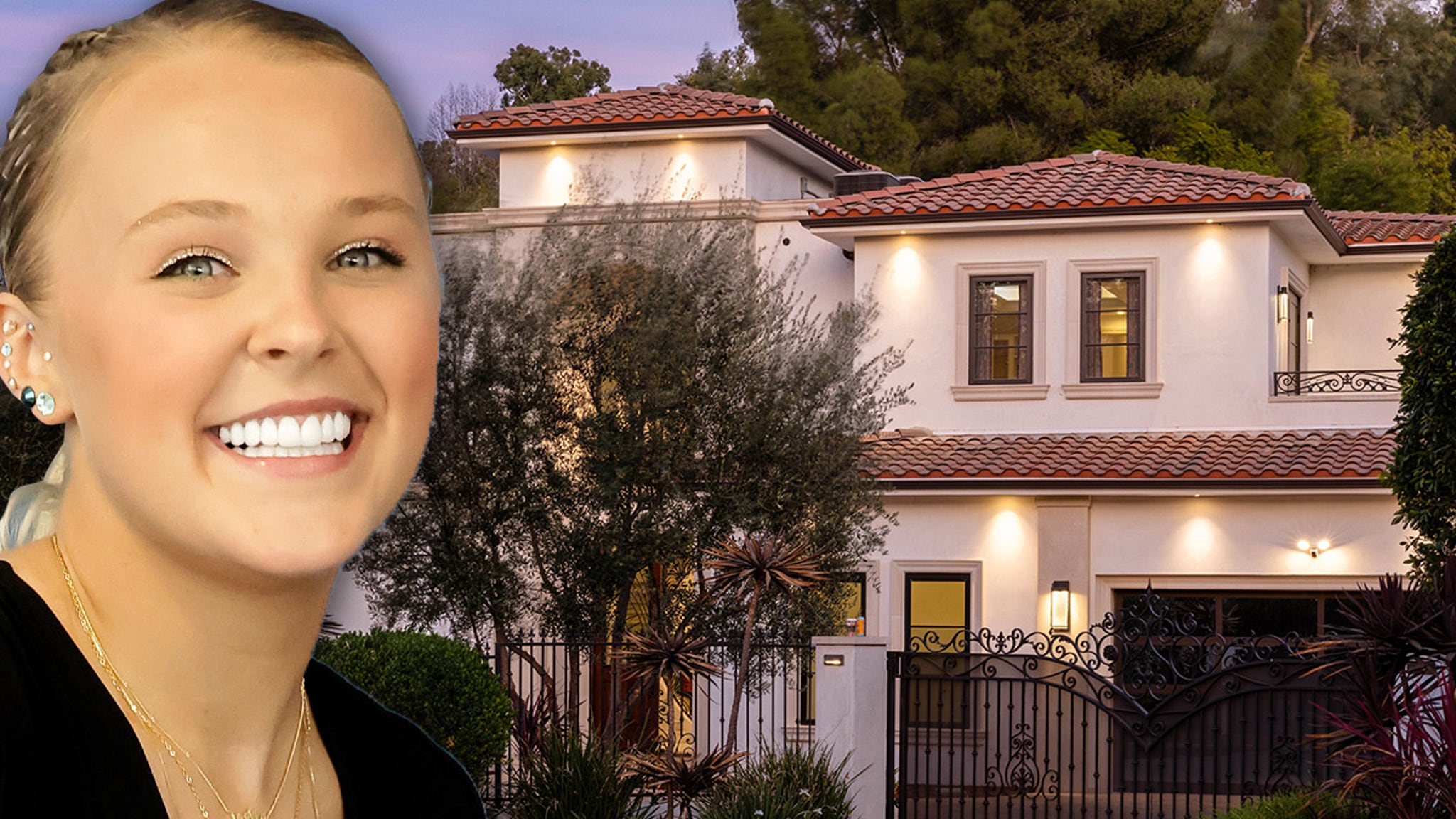
JoJo Siwa is looking to unload her mansion … because she just put it on the market.
Our real estate sources tell us the “Dance Moms” alum listed her Tarzana estate for $3,995,000.
The super modern home is 6,462 square feet with 6 bedrooms and 7 bathrooms.
JoJo’s place is decked out with a pool, spa, entertainment room, a bar and a sports court.

The primary suite features dual, custom walk-in closets, a fireplace and a balcony … and the en-suite bath has dual vanities, a soaking tub and a walk-in shower.

The gourmet kitchen is outfitted with state-of-the-art appliances from Wolf and Sub-Zero … plus a built-in breakfast bar and dual kitchen islands.
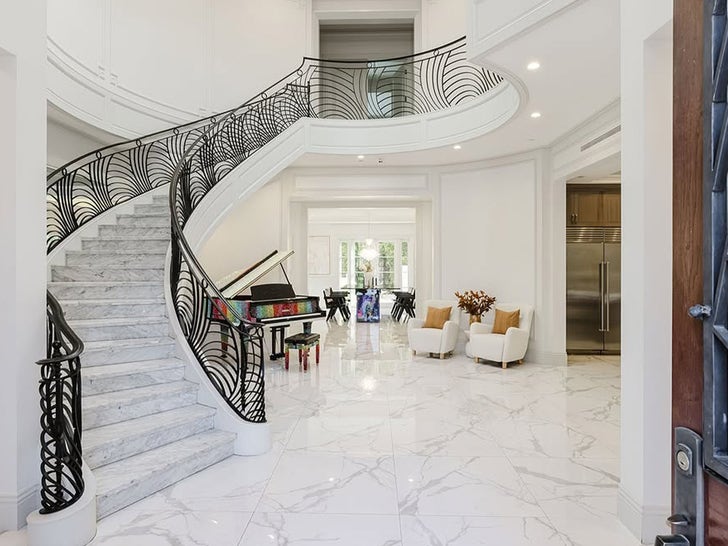
JoJo’s place is super private … with a gate and hedges that block the view from the outside.
Jason Oppenheim, Chrishell Stause and Omar Abaza of The Oppenheim Group have the listing.
Lifestyle
A fire closed a bookstore named Friends to Lovers. Romance readers kept it afloat

Owner Jamie Fortin opened Friends to Lovers book store on Nov. 14. Three days later, a fire closed her to close the shop.
Suhyoon Wood with AEDP
hide caption
toggle caption
Suhyoon Wood with AEDP
When Jamie Fortin moved to Washington, D.C., five years ago, she fell in love with the Virginia neighborhood of Alexandria and vowed to open a small business there. Last month, Fortin’s promise to herself became a reality. She opened Friends to Lovers, a romance-themed bookstore inspired by Meet Cute, a romance bookstore in her hometown of San Diego.
Friends to Lovers celebrated its grand opening on Nov. 14. “It was honestly just so joyful,” Fortin said. “We had a line around the block, which is not something I expected.”

Before the fire, Fortin estimated that Friends to Lovers offered around 800 romance titles.
Suhyoon Wood with the AEDP
hide caption
toggle caption
Suhyoon Wood with the AEDP
Just three days later, though, Fortin’s excitement went up in smoke after the building caught fire. The store sustained smoke damage, leaving the entire stock of books and merchandise unsafe to sell. Fortin was forced to close the store and go into what she described as “solutions mode.”
Fortin created the Friends and Lovers bookstore to be a space where women and queer people, who make up the overwhelming majority of romance readers, could feel safe.

In the U.S., the demand for romance books is booming. According to Publisher’s Weekly, seven of the top 10 books of the year fell under this category. In August, 550 bookstores across the U.S., U.K. and Canada participated in Bookstore Romance Day — the biggest celebration yet. Many readers have also taken to the internet to share their passion. Romance books dominate the #BookTok, a TikTok community with over 100 billion views. Creators like @listenwithbritt and @kendra.reads share their recommendations and reviews with hundreds of thousands of followers. Their videos have garnered millions of likes and views. Despite the genre’s popularity, Fortin says most of the bookstores she frequented didn’t dedicate much space to the genre. “Even though it may be their most popular selling genre, most bookstores have one or two shelves of romance,” she said.

At the grand opening of Friends to Lovers, many readers expressed the same sentiment. Some traveled more than an hour to browse the shelves. Readers came from Charlottesville, Va., Baltimore, Md. and more.
“Romance-centered bookstores are sorely lacking,” said Kayla Lloyd, who traveled from Annapolis to check out the bookstore. “We can go to Barnes & Noble and we can see the romance section, but you’re not going to get the selection that’s here.” Fortin says she stocks local and independent authors as well as bestsellers. She estimates that the bookstore offered about 800 titles before the fire.
“Outside of gay bars in the area, I think that there is definitely a lack of third spaces for people of color and queer people to hang out,” said Eleanor Bodington, a customer at Friends to Lovers.
Fortin partnered with two women who owned small businesses in the area to help launch their brands at the grand opening event. Women and queer-owned businesses also make all of the store’s non-book merchandise, including bags, hats and more. Even her store’s location was intentional, Fortin says. She wanted Friends to Lovers surrounded by other small businesses so that readers would be encouraged to support other entrepreneurs like her after they came to her store. “When I woke up [after the fire], I felt like I needed to live up to this space that I created that people are now relying on as a space they feel at home and safe,” Fortin said.
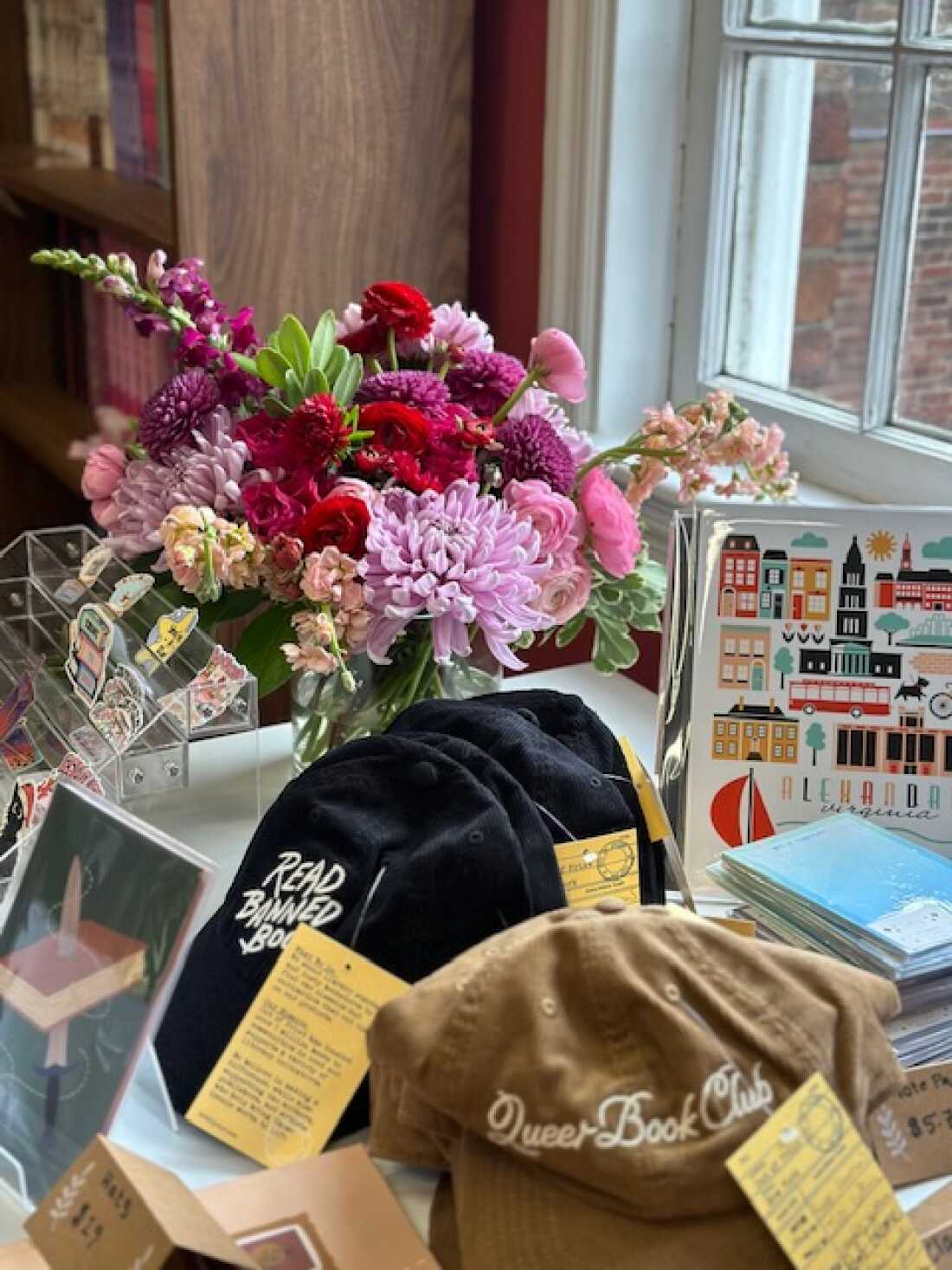
Fortin partnered with women and queer-owned businesses to create merchandise for her bookstore, including hats and stickers.
Courtesy of Maryam Bami
hide caption
toggle caption
Courtesy of Maryam Bami
Despite being open for just a few days, the community Fortin hoped to reach rallied around her business. Donations flooded in, surpassing Fortin’s $20,000 GoFundMe goal in 24 hours. After assessing the full extent of the damage, Fortin increased her donation goal to $45,000, eventually surpassing that one as well.
Fortin says she believes that her dedication to her goal of supporting women and queer businesses, combined with the tight-knit nature of the romance reading community, helped her rebuild quickly. “The community support has really buoyed me and pushed me to create something better out of the ashes, as it were,” she said. “There were more people than I ever expected that cared about my little bookstore.”
“When you set your mission, and you really stand by it, people say, ‘We love that mission. We’ll live that out as well,”‘ Fortin said.
Fortin opened a long-term pop-up location for Friends to Lovers on Dec. 7 at a nearby business. She continues to search for a new permanent location for the shop.
“It has been so overwhelming. I feel like the community is not letting me sit and wallow in my grief. Instead, they’ve said, ‘We’re going to fix this. We’re going to make sure it’s successful.”‘
Fortin says that because the romance community is used to their traditionally feminine interests not being respected, it doesn’t take the brick-and-mortar location for granted.
“I think we haven’t always had a lot of overwhelming support for things that women love,” Fortin said. “We love to say that things are ridiculous when women love them. There’s a lot of things that men love that we don’t consider ridiculous.” Fortin points out that teenage girls were the ones who loved the Beatles first before they became a household name. “Romance is one of the genres with the most staying power, that’s always been the least respected.”
“We’re creating a safe space to talk about things that are not celebrated in regular spaces,” she said. “Once women and queer people saw that, everyone said ‘let’s all stand behind this together.”‘
“The outpouring of support has been amazing as a bystander to watch,” said Maryam Bami, owner of Old Town Flower Gal. Bami launched her floral business at the Friends to Lovers grand opening. “I thought I was a fan of romance until I met some of the supporters of the bookstore.” Bami is one of several woman-owned businesses Fortin intentionally collaborated with. “She really just took a chance on all of us and really elevated us in the process,” she said.

Maryam Bami was one of several female entrepreneurs who launched their brand at the Friends to Lovers grand opening. Bami owns Old Town Flower Gal, a floral shop that specializes in “flower bombs.”
Courtesy Maryam Bami
hide caption
toggle caption
Courtesy Maryam Bami
As Fortin writes a new chapter for Friends to Lovers, she still views her community of business owners as vital to the bookstore’s success. She hopes readers supporting her rebuilding efforts will also patronize the nearby businesses that were also affected by the fire. She’s also encouraged supporters to donate to fundraisers for other businesses affected by the fire. “Women have constantly had to lift each other up and be each other’s solid ground,” she said. “If [my business] has all this hype and support and encouragement, I need to use that to build up other women and other brands.”
-

 Politics1 week ago
Politics1 week agoCanadian premier threatens to cut off energy imports to US if Trump imposes tariff on country
-
/cdn.vox-cdn.com/uploads/chorus_asset/file/25782636/247422_ChatGPT_anniversary_CVirginia.jpg)
/cdn.vox-cdn.com/uploads/chorus_asset/file/25782636/247422_ChatGPT_anniversary_CVirginia.jpg) Technology1 week ago
Technology1 week agoInside the launch — and future — of ChatGPT
-
/cdn.vox-cdn.com/uploads/chorus_asset/file/25789444/1258459915.jpg)
/cdn.vox-cdn.com/uploads/chorus_asset/file/25789444/1258459915.jpg) Technology1 week ago
Technology1 week agoOpenAI cofounder Ilya Sutskever says the way AI is built is about to change
-

 Politics1 week ago
Politics1 week agoU.S. Supreme Court will decide if oil industry may sue to block California's zero-emissions goal
-
/cdn.vox-cdn.com/uploads/chorus_asset/file/25546252/STK169_Mark_Zuckerburg_CVIRGINIA_D.jpg)
/cdn.vox-cdn.com/uploads/chorus_asset/file/25546252/STK169_Mark_Zuckerburg_CVIRGINIA_D.jpg) Technology1 week ago
Technology1 week agoMeta asks the US government to block OpenAI’s switch to a for-profit
-

 Politics1 week ago
Politics1 week agoConservative group debuts major ad buy in key senators' states as 'soft appeal' for Hegseth, Gabbard, Patel
-

 Business6 days ago
Business6 days agoFreddie Freeman's World Series walk-off grand slam baseball sells at auction for $1.56 million
-
/cdn.vox-cdn.com/uploads/chorus_asset/file/23951353/STK043_VRG_Illo_N_Barclay_3_Meta.jpg)
/cdn.vox-cdn.com/uploads/chorus_asset/file/23951353/STK043_VRG_Illo_N_Barclay_3_Meta.jpg) Technology5 days ago
Technology5 days agoMeta’s Instagram boss: who posted something matters more in the AI age




